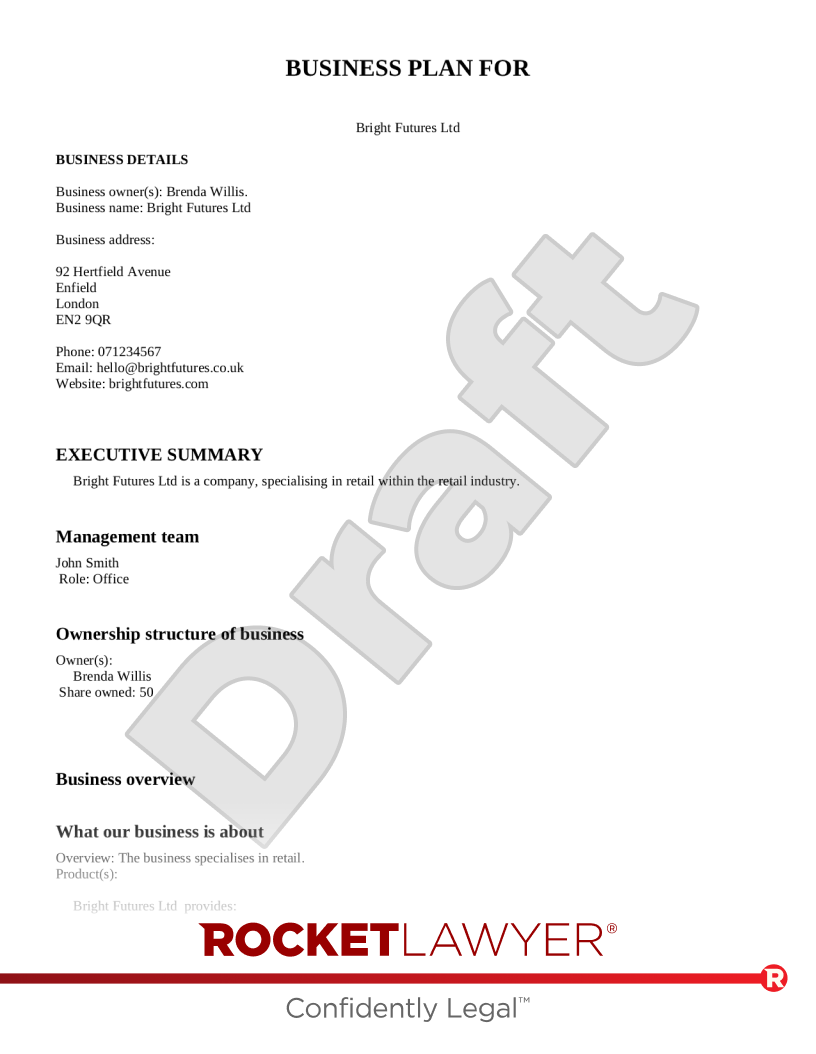What is financial modelling?
Financial modelling involves simulating the current conditions of your business to show you what its future is likely to look like.
Financial models are usually created in spreadsheet software (eg Microsoft Excel). They’re put together on an individual basis since they need to be tailored to the specifics of a business to be accurate. Financial models create a representation of the behaviour of your business. By mimicking the patterns of your business’ outgoing expenses and incoming cash flow, these models can give you a clear idea of both your present situation and your immediate future.
In other words, financial modelling uses information on how you currently finance your small business (or are planning to finance your new business) to predict its future.
Why is it important to predict the future in business?
It’s not enough to understand the present if you want to succeed in the world of business. That may sound harsh, but it’s true. Businesses that are only ready for the challenges and situations they’re currently facing can quickly go under in the face of unexpected changes; predicting the future can spare you from suffering that same fate.
To put it simply, predicting the future lets you get yourself fully ready for it. When you know exactly what’s coming, your business can get its plans and legal documents in order, hire the right people, spend money on the right things and save money in other places. This could inform business decisions (eg how much to invest in something or whether to offer up company shares for private equity to generate more funds).
You also need to know what your business will need going forward. For example, if you can accurately predict the debt that your business is likely to get into, you’ll be aware of your need to obtain a new loan or form a debt repayment plan ahead of time.
In terms of finance, you need to know whether your business can handle the financial future before that future arrives. This keeps you ahead of the game and ensures nothing catches you by surprise. It may be helpful to use a financial Customer Relationship Management (CRM) system to help your business manage customer relationships in your specific industry or field (eg a Law Firm CRM).
When do you need to project your business’ future?
Some of the most common situations in which you’d want to get a clear idea of what’s coming for your business include:
When you’re starting a business
Because it involves data such as sales history or customer preferences, startups with no track record may think financial modelling is not applicable to them. But it’s important to make a plan for the future when you’re launching a business and to get into the habit of gathering and analysing data.
Instead of current and historical data, new businesses can use industry and market research to create a financial model. For example, you can look at other businesses in your industry and carry out market research to set the right prices for your products or services. If your startup is seeking investment, any potential backers will want to see a detailed Business plan, including financial projections, to check that your business proposition is viable. You should include your predicted operating expenses and plans for a variety of financial scenarios.
When you’re looking to scale up
Ahead of a major endeavour like an enterprise transformation, it’s always important to know exactly where you stand. Upscaling is no different.
Projecting the financial future of your business allows you to base your plans on facts. That means ensuring that the plans you make are more likely to work out in your business’ favour because they’re data-backed and founded in reality. Small and medium-sized businesses (SMBs) in particular will want to be prepared to scale up, even if it isn’t to the extent that it transforms the overall size of the business. It’s always a good idea to be ready for business growth, after all.
At the start or end of financial quarters
Knowing your financial status as a new financial quarter rolls in helps you handle the challenges that come in that quarter more effectively. Each financial quarter is unique. They may follow a similar pattern, but since the world is always changing, no two quarters can be exactly the same. That also means new difficulties will arise all the time, which you’ll have to be ready for.
During budget reviews
Small businesses in particular tend not to have the luxury of extra, expendable budgets. They’ve got to monitor their finances closely because they can’t afford to overspend. This makes financial modelling particularly useful to them during budget reviews.
Financial models use your current financial state to predict its future. Hence, when you’re reviewing your budget, you’ll want to make sure your financial model shows you a future you’re happy with. If you’re not happy, that’s a clear sign something’s going wrong in the present.
It’s also useful to test changes to the budget in the model. This lets you see how those changes are likely to impact the future of your finances.
Anytime you’re preparing for changes
Not all changes are huge and super impactful. However, each one has the potential to create ripple effects, and that’s important to pay attention to, particularly for SMBs. Instead of simply implementing a change and hoping for the best, you’re better off using your financial models to see whether your current systems can cope with the development you want to implement.
For example, let’s say you’re browsing for new communication tools. Before committing to a specific tool, you’d want to run your model to check that your budget can handle the new addition. If you see your finances dipping into the red in the future with the addition of a new tool, you’ll either have to give up on that option or look into adjusting your budget elsewhere.
Best practices for financial modelling
To ensure you’re using financial modelling in the most effective way possible, you should bear in mind relevant best practices. These include:
Accounting for plenty of variables
When you want to set about starting a business, you would typically run a few checks. For example, you’d want to make sure you have enough starting capital, as well as the right resources and employees. Similarly, your financial model needs to account for as many variables as possible. The short of it is that your business doesn’t exist in a vacuum. Your finances are affected by a wide variety of variables, from changes in seasons to online trends and well beyond. The more of those you take into consideration for your models, the more accurate those models will be.
Regularly updating your financial models
The question of when to update your financial models can be daunting. What sorts of events are big enough to call for an update? Or should you be following a specific schedule?
An easy answer is to simply update your financial models as often as you can, within reason. A daily update may be a bit excessive unless you’re using those models to create new predictions on a daily basis. In that case, it might actually be a great idea to log changes very, very often. The reason why it’s so important to keep updating the spreadsheets you use to create your models is that your situation is constantly evolving. This means that, without regular updates, your resultant model can quickly lose accuracy.
Remembering that no model is perfect
Even the most accurate model in the world can be anywhere between slightly and very off when it comes to predicting the future. That’s because there’s always the possibility of a totally unprecedented event coming about – such as the Coronavirus (COVID-19) pandemic. Your model is there to give you a clear and often accurate idea of the future. It’s generally going to reflect your current reality accurately. However, you can’t rely exclusively on financial models for insights into the future. You should make sure to bear this in mind when creating business contingency plans.
The best way to address this is to keep in mind that your financial models aren’t your only window into the future. You can always use predictive algorithms, for example, to help you enrich your understanding of the next year or quarter.
Secure your business’ future with financial modelling
In order to future-proof your business, you’ve got to take advantage of the potential that comes with financial modelling. Creating accurate models lets you develop a deeper understanding of the financial reality of your business. It also helps you determine how prepared you are for future challenges and endeavours, ensuring you never walk into the future blind.
So, to put it briefly, you need financial modelling to prepare yourself for the future. That’s true regardless of the size of your business, but it applies particularly to smaller businesses, which are more likely to be strongly impacted by changes in their financial situations.





